



Are you lacking the time, energy, and patience for a complicated cast iron seasoning process? No problem! I'm here to show you how to easily season a cast iron skillet for a flawless, black patina finish.
The information provided on this site is based on my personal experience living with alpha-gal syndrome. I consistently cite and link to expert sources, but nothing published on this site should be perceived as medical advice.
Alpha-gal sensitivities vary by person. You should understand your dietary restrictions, making any adjustments needed, and directing any questions to your physician.
Living with alpha-gal syndrome is a game-changer, especially in the kitchen. Suddenly, the cookware you’ve relied on for years — like your trusty cast iron skillet — might need a second look. If you seasoned your pan with bacon grease or any other mammalian-based fat, you could be setting the stage for a potential alpha-gal reaction, even when whipping up alpha-gal friendly dishes.
Seasoning cast iron might initially seem daunting, but with the right knowledge and a straightforward, step-by-step approach, you’ll discover it’s not just doable—it’s surprisingly simple. Whether you’re looking to add new cast iron cookware to your kitchen lineup or are aiming to give your existing skillet a clean slate, this easy guide will help you transform your cast iron pans into safe vessels for your alpha-gal friendly dishes.
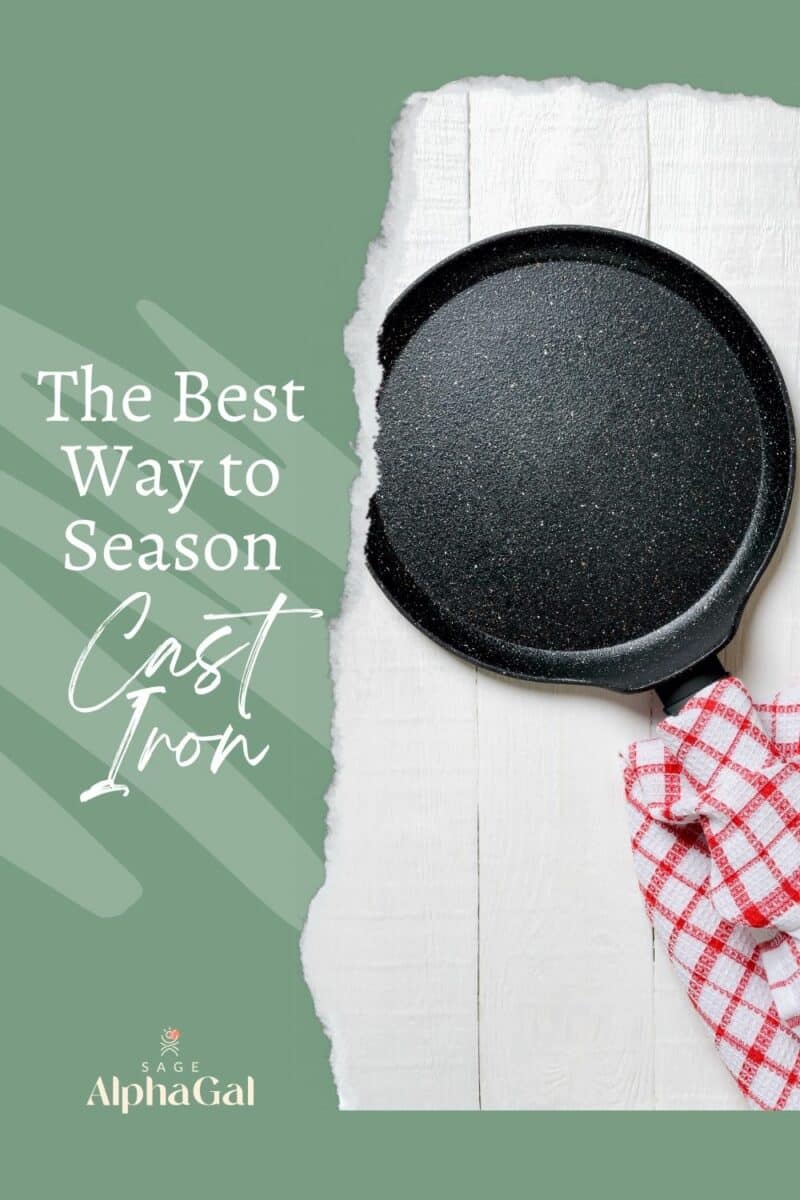
To help offset the costs of running SageAlphaGal.com, you’ll find affiliate links lightly sprinkled throughout the site. If you choose to make a purchase via one of these links, there’s no additional cost to you, but I’ll earn a teeny tiny commission. You can read all of the legal blah blah blah (as my little niece says) on the full disclosure page.
In This Article
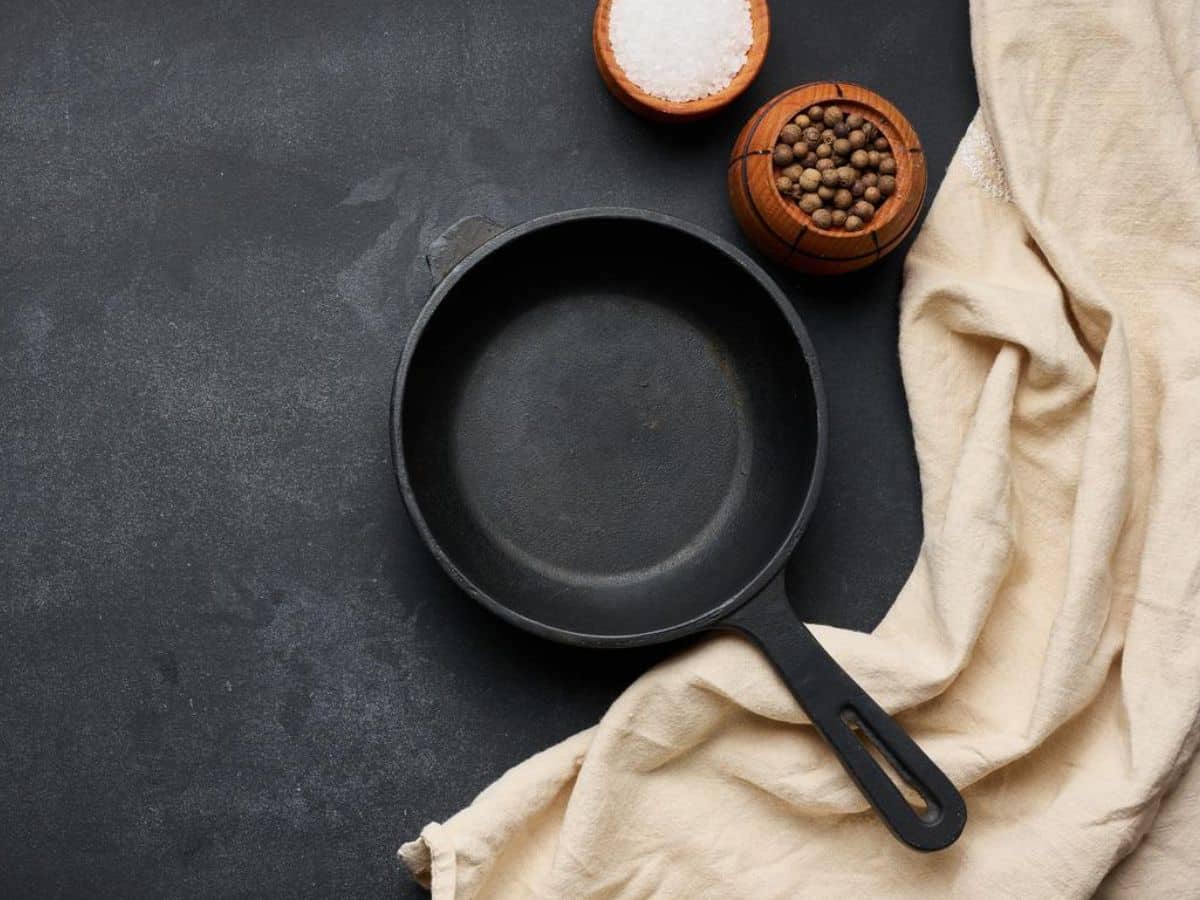
Benefits of a Properly Seasoned Cast Iron Skillet
Caring for a cast iron skillet isn’t the same as other cookware. First, you must work with it to create a nice seasoning. Even so, the process is straightforward, and once you get the perfect finish, it’s undoubtedly worth the effort.
Let’s talk about what seasoning really means. Beyond adding flavor to your dishes, seasoning a cast iron skillet involves baking a thin protective layer of oil into the pan. This process, known technically as polymerization, creates a slick cooking surface by bonding the oil to the pan’s surface.
The benefits of a well-seasoned pan include:
- Nonstick surface: The primary goal of seasoning is to create a naturally nonstick protective coating that allows for quick-release cooking and easy cleanup.
- Longevity: Protect a skillet from damaging rust and corrosion with a good seal of seasoning, and you can pass the same cooking tool down through generations.
- Beautiful appearance: Cast iron’s signature dark black sheen, patina, is primarily thanks to the seasoning. Otherwise, the skillet would be dark silver and more closely resemble pewter.
Want Alpha-Gal Safe Recipes and More?
Sign up for the weekly newsletter!
Thank You for Subscribing!
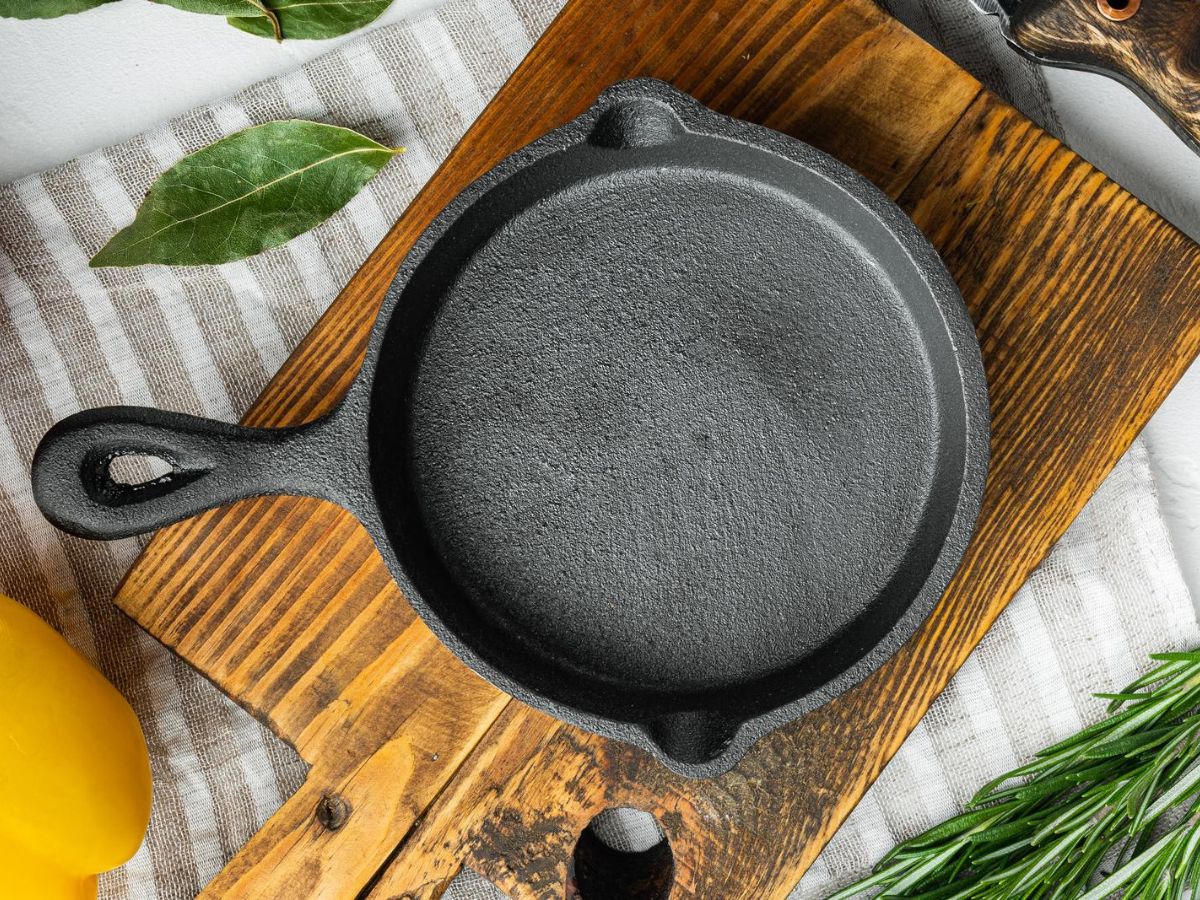
How to Season a Cast Iron Skillet Without Breaking a Sweat
Here’s my step-by-step guide to seasoning a cast iron skillet.
- Start Clean: Always start with a clean skillet. I recommend a drop of dish soap and warm water.
- Dry Thoroughly: Dry the skillet completely. Wipe it dry with a kitchen towel, then heat it over medium heat on the stovetop until all the moisture evaporates.
- Oil It Up: Pour one teaspoon of oil into the skillet and rub thoroughly all over with a folded paper towel. Carefully flip the pan over, add one teaspoon of oil on the underside and repeat the process, rubbing all over, including the handle. Continue buffing until the pan until it no longer appears greasy.
- Bake: Preheat the oven to 450 F. Arrange a baking sheet or piece of aluminum foil on the center rack to catch any drips of oil that might come off. Place the skillet upside down over the baking sheet or aluminum and bake for 45 minutes to one hour.
- Cool Down: Turn off the oven and let the pan cool to room temperature. You can take the pan out if you need to or leave it to sit and cool inside the oven.
Remember, this isn’t a one-and-done deal. If you’re working with an old pan or starting from scratch, you may need to repeat steps two through five multiple times until you see a solid layer of protection. You don’t need to complete these steps immediately and can do them over a few days. So, take your time and fit the seasoning process into your schedule.
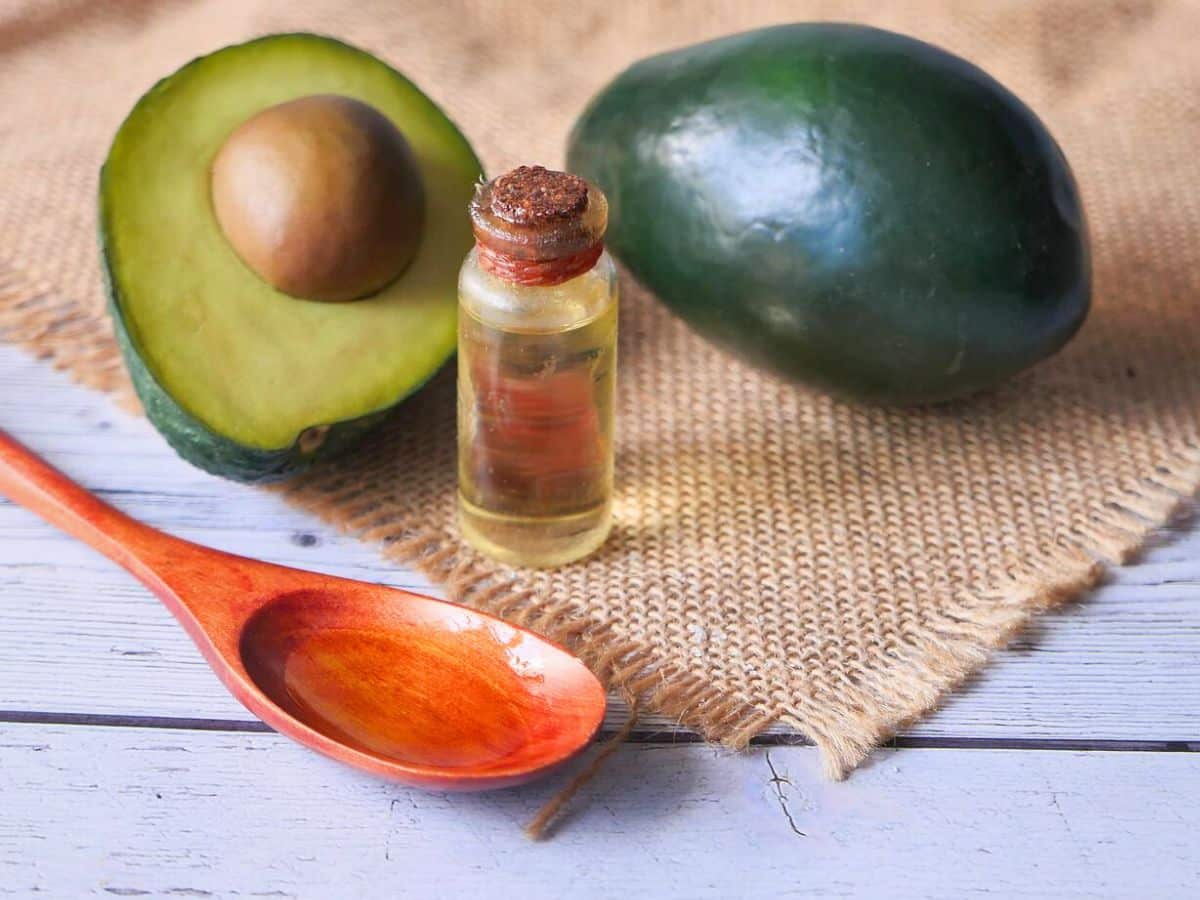
The Essential Tools for Seasoning Your Cast Iron Skillet
With a few basic tools, you’ll be seasoning in no time.
- Oil: Avoid butter and unrefined coconut oil. Otherwise, pick your favorite with a neutral flavor. Great plant-based oils include avocado oil, flaxseed oil, and other vegetable oils. Alpha gals can also use duck fat instead of rendered tallow or lard, which may cause an allergic reaction.
- Paper towels: Spread the oil around with a folded paper towel. Rub thoroughly over both the inside and outside of the pan.
- Oven mitts: Protect your hands with oven mitts while handling a hot skillet.
- Baking sheet: Place a sheet under the skillet while it bakes in the oven to catch any excess oil that drips off.
Sage Advice: Now that you know how to season your cast iron skillet, here are 37 cast iron skillet chicken recipes to try!
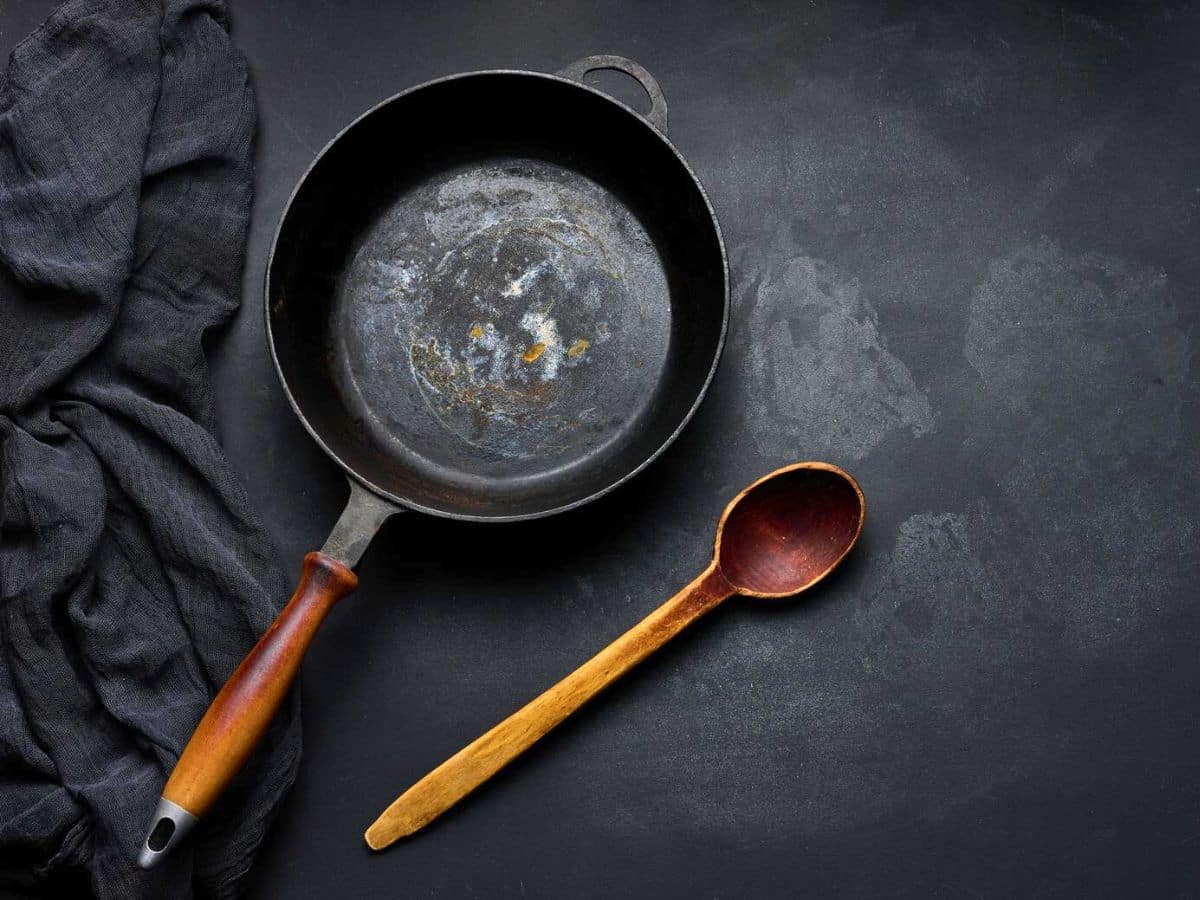
The Dos and Don’ts of Cleaning Your Cast Iron Skillet
Ongoing maintenance is even easier once the foundational layer of seasoning sets. Here are some closing tips for cleaning and preserving your cast iron skillet.
- Wash the pan in warm, soapy water and dry thoroughly shortly after cooking. Heat over medium heat before storing so you know that all water has evaporated.
- If you scorch something in your cast iron cookware or have residue stuck to the bottom, you may need steel wool to clean the pan thoroughly. If so, I recommend reseasoning the pan after cleaning it.
- Store in a dry place to avoid rust.
- Use wooden utensils and cast iron cleaning tools to avoid scratching the seasoning.
- Place a clean paper towel between cast iron when stacking to avoid scratching.
- Re-season with these step-by-step instructions whenever the skillet looks dull or food sticks to the bottom or sides.
“We simply wipe out a well-seasoned cast iron pan with a towel when it's cooled and brush with a light coat of oil after every three or four uses.”
— Kita Roberts, Girl Carnivore
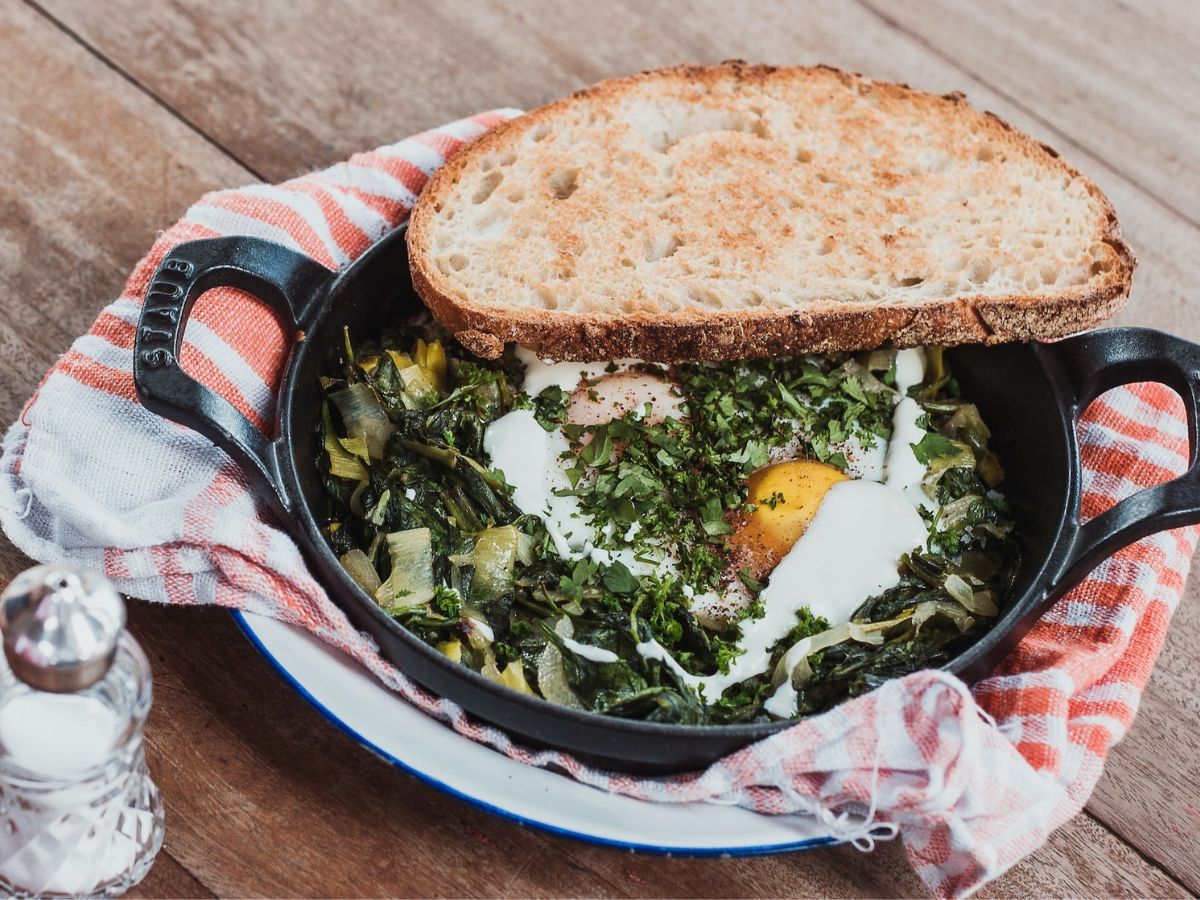
Don’t Let Cast Iron Skillet Seasoning Scare You
Seasoning cast iron is as easy as applying oil to the pan and heating it. Following these simple tips, you can be a happy owner of a rust-free cast iron skillet with a beautiful nonstick surface. With a bit of tender loving care, your skillet can be a cherished kitchen tool for everything from an easy frittata to two-ingredient English muffins and so much more!
Have You Seasoned Cast Iron Cookware?
How did it go? Do you have any additional tips and tricks to pass along? Share your experiences in the comments section below.
Portions of this article originally appeared on Food Drink Life.
Thank you for sharing!

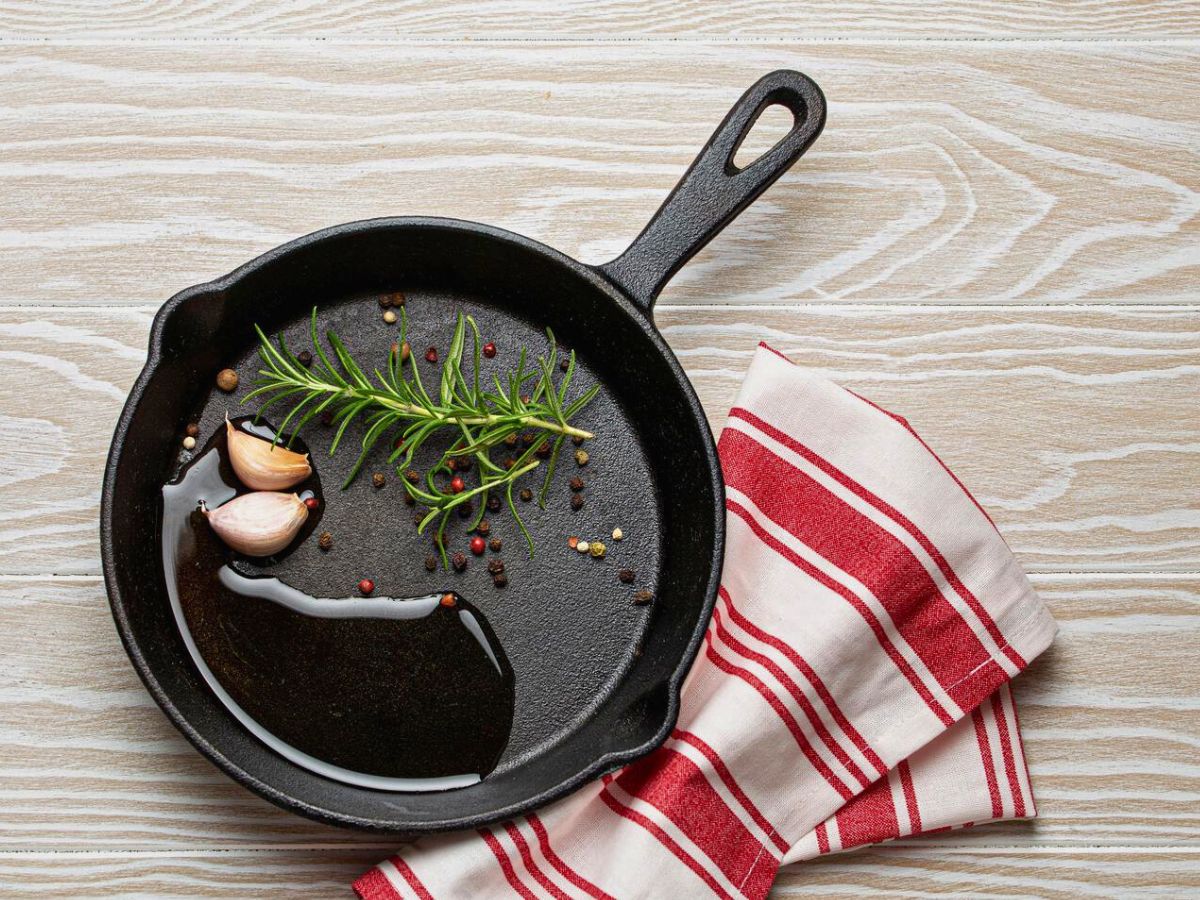
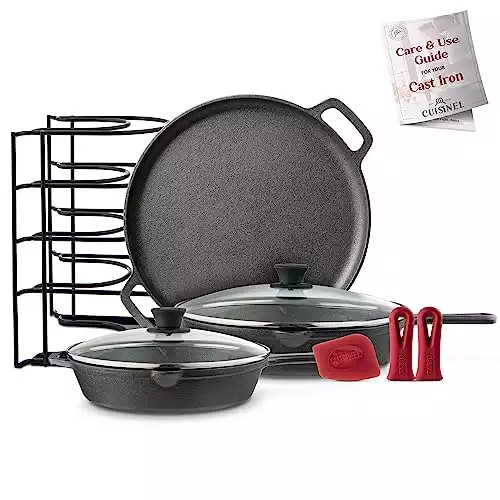
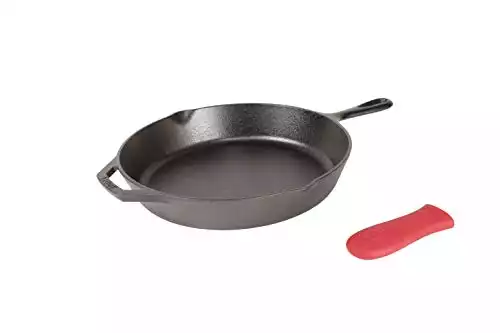
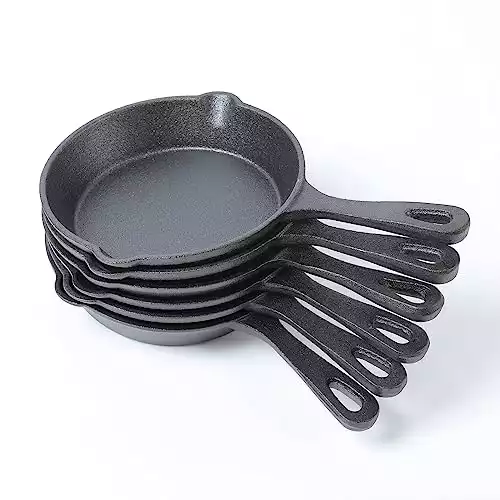



I’ve been planning to buy a cast iron skillet since last year but I always get a little worried that it would get rusty and ruined. Now, I’m finally convinced upon learning that seasoning a skillet isn’t that complicated!